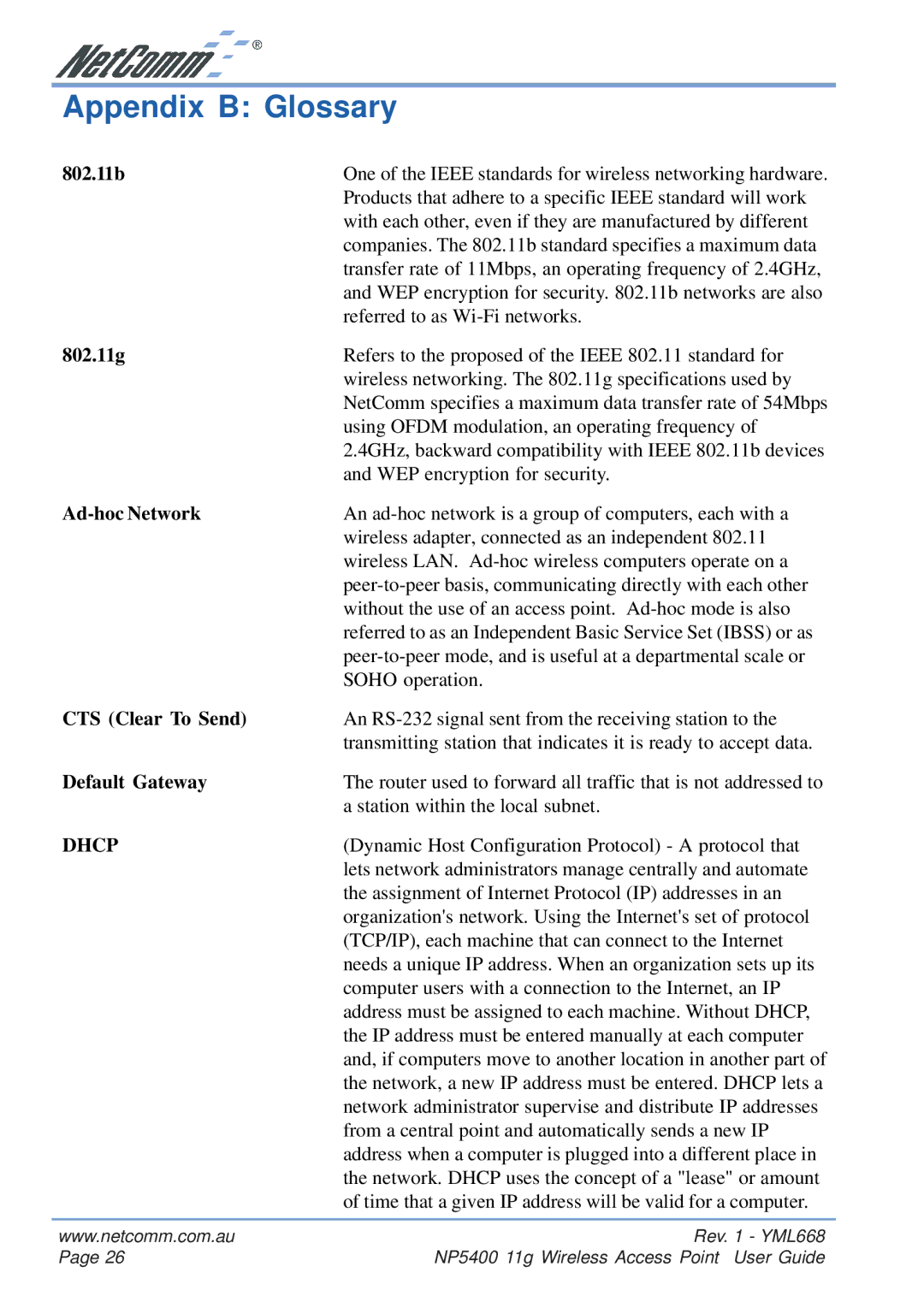Appendix B: Glossary
802.11b | One of the IEEE standards for wireless networking hardware. |
| Products that adhere to a specific IEEE standard will work |
| with each other, even if they are manufactured by different |
| companies. The 802.11b standard specifies a maximum data |
| transfer rate of 11Mbps, an operating frequency of 2.4GHz, |
| and WEP encryption for security. 802.11b networks are also |
| referred to as |
802.11g | Refers to the proposed of the IEEE 802.11 standard for |
| wireless networking. The 802.11g specifications used by |
| NetComm specifies a maximum data transfer rate of 54Mbps |
| using OFDM modulation, an operating frequency of |
| 2.4GHz, backward compatibility with IEEE 802.11b devices |
| and WEP encryption for security. |
| An |
| wireless adapter, connected as an independent 802.11 |
| wireless LAN. |
| |
| without the use of an access point. |
| referred to as an Independent Basic Service Set (IBSS) or as |
| |
| SOHO operation. |
CTS (Clear To Send) | An |
| transmitting station that indicates it is ready to accept data. |
Default Gateway | The router used to forward all traffic that is not addressed to |
| a station within the local subnet. |
DHCP | (Dynamic Host Configuration Protocol) - A protocol that |
| lets network administrators manage centrally and automate |
| the assignment of Internet Protocol (IP) addresses in an |
| organization's network. Using the Internet's set of protocol |
| (TCP/IP), each machine that can connect to the Internet |
| needs a unique IP address. When an organization sets up its |
| computer users with a connection to the Internet, an IP |
| address must be assigned to each machine. Without DHCP, |
| the IP address must be entered manually at each computer |
| and, if computers move to another location in another part of |
| the network, a new IP address must be entered. DHCP lets a |
| network administrator supervise and distribute IP addresses |
| from a central point and automatically sends a new IP |
| address when a computer is plugged into a different place in |
| the network. DHCP uses the concept of a "lease" or amount |
| of time that a given IP address will be valid for a computer. |
|
|
www.netcomm.com.au | Rev. 1 - YML668 |
Page 26 | NP5400 11g Wireless Access Point User Guide |
